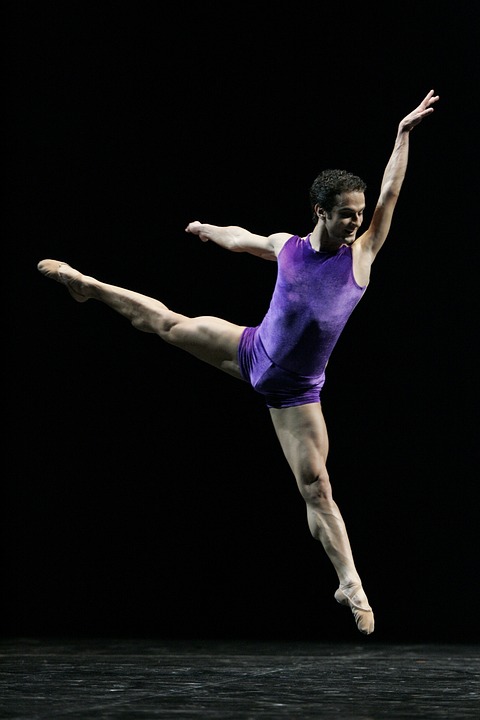Dancing Through the Decades: A Journey Through the History of Dance
Introduction
Dance is a universal form of expression that has been a part of human culture for centuries. From ancient rituals to modern dance clubs, dancing has been a way for people to connect with each other, celebrate life, and express their emotions. Through the decades, dance styles have evolved and changed, reflecting the cultural trends and values of each era. Join us on a journey through the history of dance as we explore the dances that have defined each decade and shaped the way we move and groove.
1920s: The Roaring Twenties
The 1920s were a time of social and cultural revolution, and dance played a significant role in shaping the spirit of the decade. The Charleston, a lively and energetic dance style that originated in African American communities, became a popular dance craze in the 1920s. Characterized by fast footwork and swinging movements, the Charleston was a symbol of the freedom and liberation felt by many Americans during the Jazz Age.
1930s: The Swing Era
The 1930s saw the rise of swing music and dance, with dances like the Lindy Hop and the Jitterbug becoming popular among young people. These energetic and acrobatic dance styles reflected the excitement and optimism of the era, as people sought to escape the hardships of the Great Depression through music and dance.
1940s: The Golden Age of Hollywood
The 1940s were a golden age of Hollywood glamour, and dance played a central role in many films of the era. Fred Astaire and Ginger Rogers became iconic dance partners, dazzling audiences with their graceful and sophisticated dance routines. Ballroom dancing also gained popularity in the 1940s, as couples twirled and spun across dance floors in elegant waltzes and foxtrots.
1950s: The Birth of Rock ‘n’ Roll
The 1950s marked the birth of rock ‘n’ roll music and dance, with artists like Elvis Presley and Chuck Berry revolutionizing the music scene. The jitterbug and the twist became popular dance styles among teenagers, as they rebelled against the social norms of the time and embraced a new form of self-expression through dance.
1960s: The Age of Psychedelia
The 1960s were a time of social upheaval and change, and dance reflected the countercultural movements of the era. The hippie movement embraced free-form and improvisational dance styles, as people danced barefoot in fields and at music festivals like Woodstock. The psychedelic rock music of bands like The Beatles and Jimi Hendrix inspired dancers to move in new and unconventional ways, breaking free from traditional dance forms.
1970s: The Disco Era
The 1970s were the heyday of disco music and dance, with clubs like Studio 54 becoming iconic symbols of the era. The hustle and the bump were popular dance styles in disco clubs, as people danced the night away in glittering outfits and platform shoes. Disco music celebrated the joy and freedom of dancing, as people let loose and embraced their inner diva on the dance floor.
1980s: The Era of MTV
The 1980s marked the rise of music videos and MTV, which brought dance into the living rooms of millions of viewers around the world. Breakdancing and hip-hop dance became popular among urban youth, as they expressed themselves through intricate footwork and body movements. Iconic music videos like Michael Jackson’s “Thriller” showcased the power of dance as a storytelling medium, inspiring a new generation of dancers and choreographers.
1990s: The Rise of Pop Culture
The 1990s saw the rise of pop music and dance, with artists like Madonna and Britney Spears dominating the music charts. Hip-hop and street dance styles like krumping and voguing gained popularity in mainstream culture, as people embraced the fusion of dance and music in music videos and live performances. The 1990s also saw the rise of reality TV shows like “Dancing with the Stars,” which brought dance into the homes of millions of viewers and inspired a new wave of interest in ballroom dancing.
2000s: The Digital Revolution
The 2000s marked the digital revolution, as the rise of the internet and social media changed the way we consume and share dance. Dance challenges and viral videos became popular on platforms like YouTube and TikTok, as dancers from around the world connected and shared their moves with a global audience. Dance styles like twerking and the Harlem Shake went viral, as people embraced the power of dance to unite and inspire.
Conclusion
Dance has been a constant companion throughout the decades, reflecting the cultural trends and values of each era. From the swing dances of the 1930s to the disco fever of the 1970s, dance has brought people together and inspired them to move and groove to the rhythm of life. As we look back on the history of dance, we are reminded of the power of movement and music to transcend boundaries and connect us in ways that words alone cannot. So let’s keep dancing through the decades, celebrating the diversity and beauty of dance as a timeless form of expression and connection.
